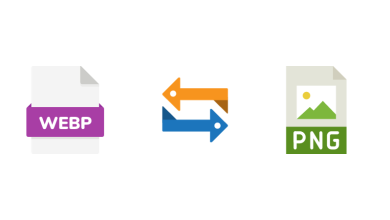
The rapid advancement of legal AI is transforming the legal profession, offering innovative solutions to streamline complex processes and enhance decision-making. As law firms and legal professionals increasingly adopt AI legal assistants, the demand for efficient and reliable tools continues to grow. This evolution has an impact on how legal services are delivered, making it crucial for practitioners to understand and harness the power of AI in their daily operations.
To build an effective legal AI assistant, professionals need to consider various factors, including choosing the right AI model and implementing Retrieval-Augmented Generation (RAG) for legal knowledge. Law firms looking for tailored strategies to enhance their online presence, particularly in relation to legal AI and other tech innovations, might find resources like this SEO for Law Firms guide useful in maximizing their visibility. This guide will explore the key steps to create an AI legal assistant, examine ethical considerations, and highlight best practices.
Understanding Legal AI Assistants
What is a Legal AI Assistant?
A legal AI assistant is a software platform that leverages artificial intelligence to enhance or automate various aspects of legal work. These assistants utilize advanced technologies such as natural language processing (NLP), machine learning, and other AI capabilities to understand and interpret legal information, queries, and documents. By harnessing the power of AI, these tools can analyze case law, provide recommendations based on legal principles and precedents, and streamline legal processes to improve efficiency and accuracy in legal operations.
Legal AI assistants are designed to complement human expertise rather than replace it. They serve as powerful tools that enable legal professionals to focus on higher-value tasks requiring human judgment and creativity. By automating repetitive and mundane tasks, these AI-powered assistants free up time for lawyers to engage in more complex legal work and strategic thinking.
Key Features of Legal AI Assistants
Legal AI assistants offer a range of features that can significantly enhance the work of legal professionals. Some key features include:
- Document Processing and Analysis: AI tools can quickly review and analyze vast amounts of legal documents, contracts, and policies, identifying potential risks, inconsistencies, or non-compliance issues.
- Legal Research: These assistants can rapidly search and analyze extensive databases of legal information, providing quick access to relevant cases, precedents, and legal opinions.
- Contract Drafting and Review: AI-powered assistants can generate contracts, agreements, and other legal documents based on predefined templates and guidelines, saving time and effort.
- Natural Language Understanding: Advanced AI assistants can comprehend and analyze complex legal language, including statutes, regulations, and case law.
- Workflow Management: AI tools can streamline legal workflows by automating routine tasks, facilitating collaboration, and managing deadlines.
Benefits for Legal Professionals
The integration of legal AI assistants offers numerous benefits for legal professionals:
- Increased Efficiency: AI assistants can handle repetitive tasks quickly and accurately, reducing time and costs associated with manual work.
- Enhanced Accuracy: By leveraging AI for document review and analysis, legal professionals can improve the comprehensiveness and accuracy of their work.
- Improved Decision-Making: Legal AI tools provide data-driven insights, enabling lawyers to make more informed decisions.
- Time Savings: With AI handling routine tasks, legal professionals can dedicate more time to high-value activities such as client communication and strategic planning.
- Continuous Learning: AI assistants can learn from the experiences and expertise of legal teams, improving their capabilities over time.
- Risk Mitigation: By analyzing contracts and legal documents, AI tools can help identify potential risks and compliance issues, allowing legal professionals to take proactive measures.
As the legal industry continues to embrace digital transformation, AI assistants are becoming indispensable tools for lawyers and legal professionals. These AI-powered solutions not only enhance productivity but also enable legal teams to deliver more effective and efficient services to their clients.
Choosing the Right AI Model
When building a legal AI assistant, selecting the appropriate AI model is crucial for achieving optimal performance. Legal professionals need to consider various factors to ensure the chosen model aligns with their specific requirements and can effectively handle legal tasks.
Popular AI Models for Legal Applications
Several AI models have gained prominence in the legal industry due to their ability to process and analyze legal information. IBM Watson Legal, for instance, utilizes advanced Natural Language Processing (NLP) to streamline legal research and contract analysis. It can process vast amounts of data and extract key information much faster than a human could.
Another notable model is Luminance, which employs machine learning for document review and contract analysis. This tool is particularly useful for due diligence processes and can learn from interactions with users, improving its understanding of legal documents over time.
Kira Systems is another powerful AI model that uses machine learning to extract critical information from contracts. It has proven invaluable for due diligence tasks, capable of identifying and extracting clauses and data points across thousands of documents in a fraction of the time it would take a human.
Considerations for Model Selection
When choosing an AI model for legal applications, several factors should be taken into account. First, the model’s ability to understand and interpret legal language is paramount. Models like LegalBERT, which are specifically trained on legal texts, may outperform general models like GPT in legal tasks.
The model’s adaptability to specific legal domains is another crucial consideration. Some models, like Harvey AI, are designed to assist lawyers across various practice areas and can enhance aspects of legal work such as contract analysis, due diligence, litigation, and regulatory compliance.
Data privacy and security are also critical factors, especially when dealing with sensitive legal information. It’s essential to choose a model that adheres to strict data protection standards and ensures the confidentiality of client information.
Fine-tuning for Legal Tasks
Fine-tuning an AI model for legal tasks can significantly improve its performance and relevance. This process involves adjusting a pre-trained model using specific legal data to ensure it comprehends legal jargon and context.
One effective approach is Parameter Efficient Fine-Tuning (PEFT), which allows for selective updates or additions of parameters to train the model for new tasks. Low-Rank Adaptation (LoRA) is a promising implementation of PEFT that offers advantages in reducing computational resources and fine-tuning time while maintaining or surpassing model performance.
By fine-tuning AI models using a law firm’s own expertise and internal data, firms can develop proprietary AI intellectual property that outperforms general-purpose models. This approach enables firms to tackle complex legal tasks with a level of precision and efficiency that goes beyond what general-purpose models or prompt engineering alone can achieve.
Implementing RAG for Legal Knowledge
Retrieval-Augmented Generation (RAG) is transforming the landscape of legal AI, offering a powerful solution to enhance the accuracy and relevance of AI-generated responses in the legal domain. This innovative approach combines the strengths of retrieval-based and generation-based models to provide more comprehensive and context-aware results.
Retrieval-Augmented Generation Explained
RAG is a vector-based AI search method designed to boost accuracy by grounding generated responses in real-world data. Unlike common-use AI models that rely solely on pre-trained knowledge, RAG enhances the generation process by retrieving pertinent information from external databases. This two-phase system aims to reduce the risk of hallucinations, a common concern in AI-generated content.
The retrieval phase is the first step, where the AI processes the user’s query using natural language processing techniques to search for relevant documents. Once the information is retrieved, the AI moves into the generation phase, using the gathered documents and large language models to craft a more informed, context-rich response.
Creating a Legal Knowledge Base
To implement RAG effectively for legal AI, it’s crucial to create a comprehensive and well-structured legal knowledge base. This involves organizing and indexing vast amounts of legal information, including case law, statutes, regulations, and legal opinions. The quality of the input data directly influences the output, making the preparation of this knowledge base a critical step in the RAG implementation process.
Law firms and legal professionals can leverage existing datasets of legal assessments, documents, and precedents to improve the quality of RAG-generated output. By using these assessments as compliance benchmarks, the RAG system can identify patterns and common issues, enhancing its ability to recognize legal risks and provide accurate advice.
Optimizing RAG for Legal Queries
To optimize RAG for legal queries, it’s essential to fine-tune the system for specific legal tasks and domains. This involves training the model on legal terminology, concepts, and reasoning patterns. Implementing techniques such as query translation and similarity searches can improve the relevance of retrieved information.
One effective strategy is to add metadata to document chunks, which can help process results more efficiently. For instance, appending the date of legal documents to their metadata can prioritize more recent and relevant context during retrieval. This approach recognizes that similar doesn’t always equal relevant in legal contexts.
It’s important to note that while RAG significantly enhances the performance of legal AI tools, human oversight remains crucial. The current state of these systems still requires expert review to ensure accuracy and compliance with legal standards. As the technology evolves, ongoing development and refinement will be necessary to fully harness the potential of RAG in the legal domain.
Ethical Considerations and Best Practices
Addressing Bias in Legal AI
The development of legal AI tools brings forth significant ethical challenges, particularly concerning bias. AI systems can inadvertently perpetuate and amplify existing biases present in the data they are trained on. This issue is especially critical in the legal domain, where fairness and equality are paramount.
To mitigate bias, legal AI developers and users should implement diverse teams when creating these technologies. This approach helps ensure that various perspectives are considered during the development process, reducing the risk of biased outcomes. Additionally, it is crucial to carefully review and curate the training data to prevent the perpetuation of historical biases that may be present in legal precedents or case law.
Legal professionals must be aware that AI tools, despite their sophistication, can reflect and exacerbate human biases. Therefore, it is essential to implement rigorous testing and auditing processes to identify and address any potential biases in AI-generated legal advice or decisions. Regular bias assessments and transparency in algorithmic decision-making can help maintain the integrity of legal AI systems.
Ensuring Data Privacy and Security
Data privacy and security are paramount concerns when implementing legal AI tools. Law firms and legal professionals handle highly sensitive client information, and the use of AI systems introduces new risks to data protection. To address these challenges, organizations must adhere to strict data protection regulations, such as the General Data Protection Regulation (GDPR) in the European Union.
Legal AI providers should implement robust security measures to protect client data from breaches or unauthorized access. This includes using encryption, secure data storage, and access controls. Additionally, law firms should conduct thorough due diligence when selecting AI vendors, ensuring they have appropriate security protocols in place.
Transparency in data handling practices is crucial. Legal professionals should clearly communicate to clients how their data will be used in AI systems and obtain informed consent when necessary. Implementing data minimization principles, where only essential information is processed by AI tools, can further enhance data privacy.
Maintaining Human Oversight
While legal AI tools offer significant benefits in terms of efficiency and accuracy, maintaining human oversight is critical to ensure ethical and responsible use. Legal professionals should view AI as a supportive tool rather than a replacement for human judgment and expertise.
Implementing a human-in-the-loop approach, where AI recommendations are reviewed and validated by legal experts, can help mitigate risks associated with automated decision-making. This approach ensures that the final decisions are made by qualified professionals who can consider nuanced ethical and legal considerations that AI systems may not fully grasp.
Legal organizations should also invest in training programs to help lawyers and staff understand the capabilities and limitations of AI tools. This knowledge empowers legal professionals to use AI effectively while maintaining their critical thinking skills and professional judgment.
By addressing bias, ensuring data privacy and security, and maintaining human oversight, legal professionals can harness the power of AI while upholding ethical standards and maintaining the integrity of the legal profession.
Conclusion
Legal AI assistants are changing the game in the legal world, making things easier and smarter for lawyers and law firms. Building these tools needs careful thinking about picking the right AI model, using RAG for better legal knowledge, and keeping an eye on ethics. It’s clear that AI has a big influence on how legal work gets done, helping lawyers focus on the tricky stuff while AI handles the simpler tasks.
To wrap up, as AI keeps growing in the legal field, it’s crucial to balance its benefits with ethical concerns. Lawyers need to stay on top of these new tools, using them wisely to improve their work while still relying on their own smarts and judgment. In the end, AI in law isn’t about replacing lawyers, but about giving them a helpful hand to do their jobs better and serve clients more effectively.
FAQs
- What is an AI legal assistant?
An AI legal assistant is a sophisticated tool powered by General AI, designed to assist legal professionals in managing both simple and complex tasks efficiently. Products like CoCounsel from Thomson Reuters exemplify professional-grade AI assistants, offering a comprehensive and user-friendly platform for various legal functions. - How can one build their own AI legal assistant?
To develop a custom AI assistant, follow these steps: First, clearly define the assistant’s intended functions. Select the appropriate technology stack. Gather and prepare necessary data, ensuring to clean it for optimal processing. Train your AI model, design a user interface, and consider integrating voice recognition features if needed. - Is there a tool that uses AI to create legal documents?
Yes, AI technology has significantly advanced to support the creation, review, and analysis of legal documents. These tools not only boost the efficiency of legal practices but also improve the accuracy and reliability of the documents produced. - What are the steps involved in building your own AI from scratch?
To create an AI system, start by identifying the specific problem you want to solve. Collect relevant data and prepare it by cleaning and organizing for training purposes. Choose a suitable AI technology, build and train your model, then rigorously test it before deployment.





